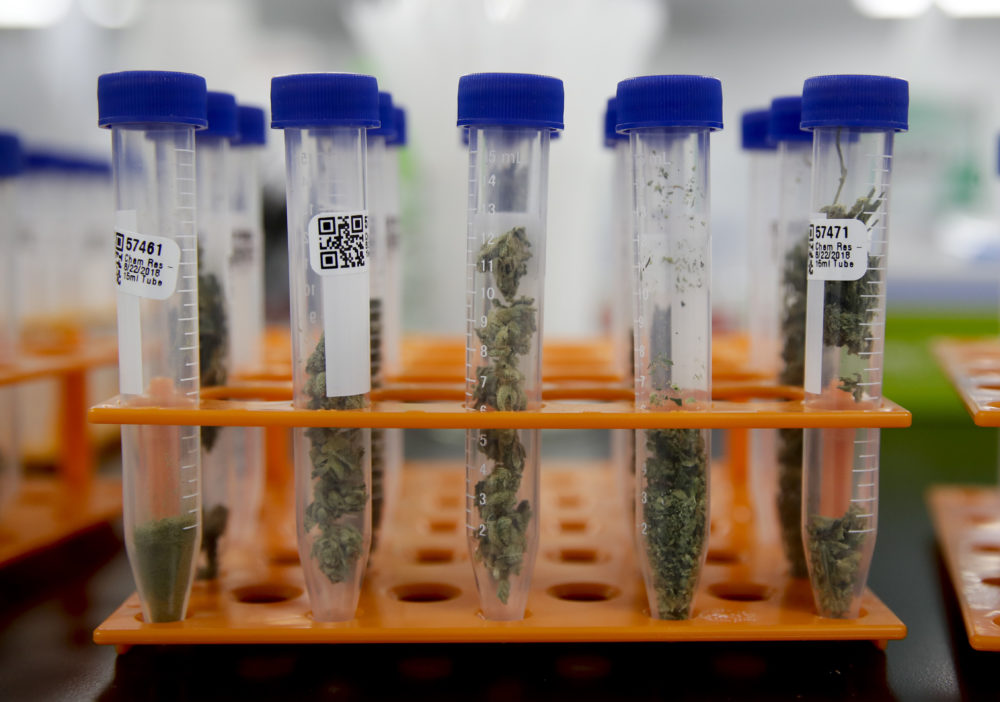The market for cannabis and its derivatives is booming. As more and more countries legalize marijuana, production is increasing worldwide, competition is growing, and even CBD for sale online is available.
As in any market, we can find some cannabis-based products of the highest quality and others of dubious origin and credibility. That is why to increase their credibility, and so that users can enjoy the benefits of their products with peace of mind, they apply the resource we will talk about today:
A certificate of analysis (COA).
What is a Cannabis Lab Test Report/COA?
A certificate of analysis is a report from a third-party laboratory on a cannabis product. This report will measure the safety of a cannabis product.
In addition, the laboratory will measure whether the content of the product is what its description claims to be.
In the lab test reports of marijuana-based products, the cannabinoid profile is the first thing we’ll find. This section includes each of the 15 cannabinoids that should be tested ( CBDV, CBDA, CBDVA, CBGA, CBD, THCV, CBG, THCVA, CBN, Δ8THC, CBL, CBC, Δ9THC, THCA, and CBCA).
It is imperative to highlight that, in CBD medicinal products, the Δ9THC percentage cannot be, by any means, higher than 0.3%. We should pay special attention to it when medicating a child or an older person since they are the most susceptible to its adverse effects.
Unfortunately, with the exponential increase in demand for cannabis products worldwide, some brands and laboratories are taking advantage of users by providing misleading information about the content of their products.
In this study conducted by JAMA, researchers measured the accuracy of the cannabinoid profiles of several extracts sold online. The result? 26% of the products tested contained less CBD than indicated, and some of them had an amount of THC that could be sufficient to cause psychotropic effects, especially in children.

How to Read a Cannabis Lab Report?
Now that we know why cannabis lab reports exist, we will simplify their interpretation as much as possible.
In most certificates of analysis, we will see the results of the measurements expressed in three ways: the exact value of the analyte, <LOQ, and <LOD. Moreover, we will be able to see the status of each test, which will be reflected in two results: pass or fail.
The information to be found in the lab reports will be divided into the following sections, and in the next order:
- Cannabinoid presence
- Heavy metals presence
- Pesticides presence
- Moisture content
- Water activity
- Foreign material screening
- Terpene content
- Residual solvent matter
- Mycotoxins
- Microbial screening
Different labs may express the various components in weight units or parts per million based on weight.
What do <LOQ, and <LOD Mean in a COA
As mentioned, there are two other values that we can find to quantify the presence or absence of a component in a cannabis product, leaving aside the exact percentage.
<LOQ – Less than the limit of quantification
This result is presented in a laboratory report when a particular component is present on a product, but its concentration is so tiny that the lab cannot quantify it.
<LOD – Less than the limit of detection
The acronym >LOD in a COA result indicates that the presence of a given component is less than detectable, negligible, or practically nil.
What to Look for on a Cannabis COA
As already mentioned, in medicinal products, we must pay special attention to the THC percentage of the product and make sure that it is equal to or less than the maximum allowed for these products; 0.3%.
However, some companies producing cannabis flowers for recreational use are also starting to resort to certificates of analysis to increase the credibility of the pot they sell.
Essential cannabinoids
THC
THC or tetrahydrocannabinol is probably the best-known cannabinoid in cannabis. And, of course, it will also matter to recreational users who will consume flowers with much more THC than 0.3%.
It is a psychoactive compound and is responsible for the characteristic high so prized by recreational users. When absorbed by the body, THC usually induces a strong feeling of joy, relaxation, euphoria, numbness, etc.
New research has also revealed that THC may have a variety of medicinal applications. For example, several studies indicate that it may help treat post-traumatic stress disorder (PTSD), glaucoma, insomnia, and chronic pain associated with diseases such as fibromyalgia.
CBD
CBD, or cannabidiol, is a cannabinoid that has become famous for its medicinal properties. You can find it in higher concentrations in hemp and in a few medical cannabis strains that have been specially developed to be rich in CBD.
However, most strains grown for recreational use tend to be rich in THC and contain only small amounts of CBD.
THCV
THCV, or tetrahydrocannabivarin, is a cannabinoid that has recently made the news. It is a psychoactive compound known to induce a clear and stimulating cerebral effect.
It is a psychoactive cannabinoid produced by cannabis plants, sometimes in vast quantities. Some Asian strains (such as from China, India, Nepal, Thailand, Afghanistan, and Pakistan), for example, have THCV concentrations of over 50%.
Although there’s not as much research on THCV as CBD or THC, scientists believe that it has significant medicinal potential.
CBG
CBG, or cannabigerol, is a non-psychoactive compound even at high doses. It is a non-acidic form of CBGA, the first cannabinoid to form in the plant.
Scientists first discovered cannabigerol in 1964. Like many other cannabinoids, CBG has promising medicinal potential.
In January 2015, for example, researchers from the Department of Biochemistry and Molecular Biology at the University of Madrid discovered that CBG could be beneficial in treating neurodegenerative diseases such as Huntington’s disease.
Unfortunately, CBG is also only found in trace amounts in modern strains (in concentrations of 1% or less). But with further research into cannabis and its compounds, this could change.
Lab Test Reports – Making the Weed Industry a More Serious One.
Now that we know how to interpret a cannabis lab report and know the most crucial information these certificates provide, we can understand how their existence is highly beneficial to the cannabis industry.
Many people are reluctant to leap to try cannabis-based products for fear that they may cause undesirable effects or fear not knowing what they contain.
With the existence of the COA, these problems are greatly diminished since these certificates are provided by third-party labs that will give an unbiased and highly accurate result on cannabis products.


